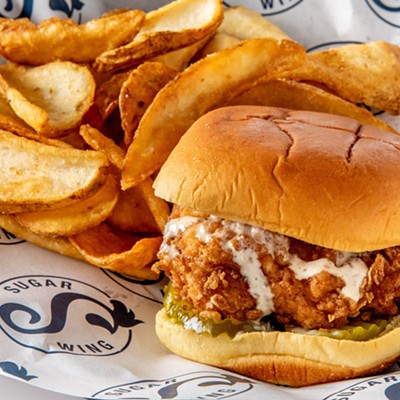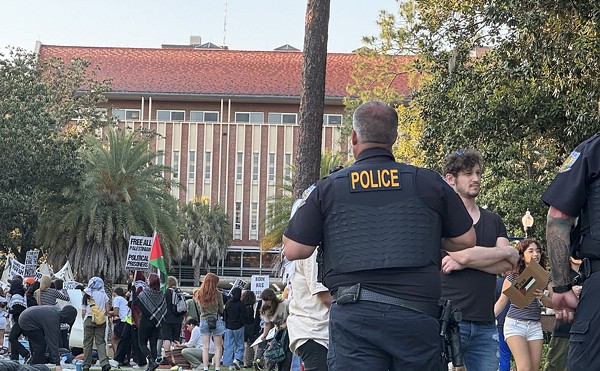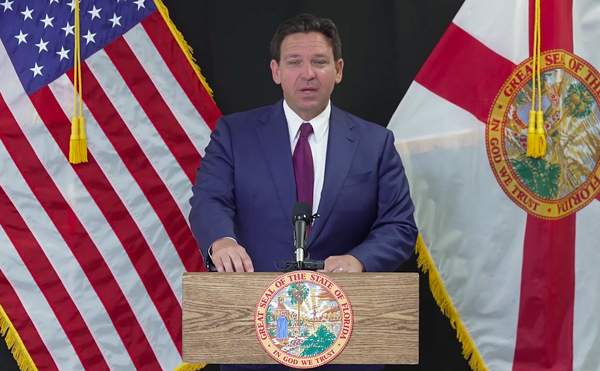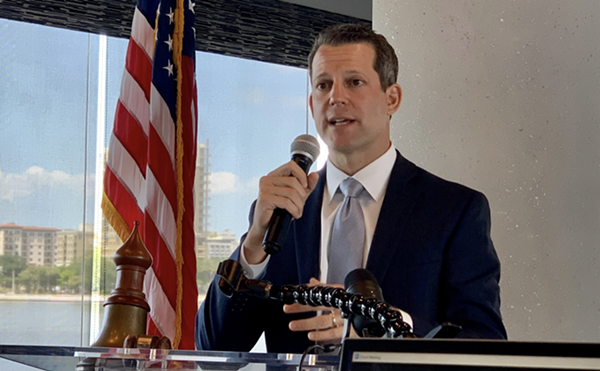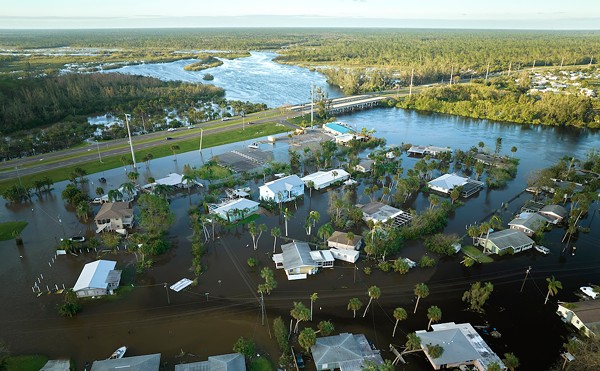Last week, at a time when BP and its partners are facing multiple criminal probes by the Justice Department, the company released its report on the Deepwater Horizon Spill. Included are eight "potential" factors which caused the wellhead to explode and deluge the gulf with an estimated 190 million gallons of oil. BP cites failures on the part of contractors Halliburton (who cemented the well), Transocean (who leased the rig) and blow-out preventer supplier Cameron International. According to the report, the valve on the blow-out preventer should have sealed the well after the explosion. Internal and external experts compiled the report, which disperses blame for the spill away from BP.
Immediately following BP's report, the oil giant's stock went up 2 percent.
Greenpeace released this response:
“BP’s efforts to spread the blame for the Deepwater Horizon oil disaster displays a devastating litany of human error, incompetence and technical failure, but of course this tragedy is still unfolding in the Gulf of Mexico."
Which is why a 165-foot ship is breaking new ice in the gulf, the scientific kind. Greenpeace is helping scientists research the massive spill's repercussions on every level, beginning at the bottom of the food web. For the first leg of the expedition, the environmental organization brought Nova Southeastern University oceanographic professor Charles Messing, Ph.D., and associate professor Joe Lopez, Ph.D. to Key West and the Dry Tortugas to study sponges. Lopez's laboratory focuses on sponges as barometers for water pollution.
[image-1]
"Sponges filter, feed and process incredible amounts of water and retain trace elements of things in that water," Kline said. "So if there was diffused oil or dispersants, it is very likely to show up in the sponges first."
Messing told Creative Loafing that his research is primarily focused on identifying which sponges live in that part of the gulf and their relationships to one another.
"We have to know that before any investigation could be carried out into how environmental changes, or events such as the spill, might affect them," Messing said.
Then there are the plankton and even smaller phytoplankton — the very base of the food web. With Greenpeace's help, Dr. Erin Grey and Dr. Caz Taylor of Tulane University collected samples of blue crab larvae to see if the species has been affected by the spill. If so, the impact could be devastating to the blue crab industry in the Gulf states.
The phytoplankton and their larger plankton counterparts are vital to a much more visible and vocal food-web member, the whale. The Gulf of Mexico has a vibrant whale community, including sperm, beaked, pilot and even humpback whales, according to Greenpeace's Molly Dorozenski. The next leg of the Arctic Sunrise's journey is to pick up special deepwater sonar equipment in Gulfport, Mississippi.
"Larger whales use a much lower frequency so you need special equipment for each species," explains Greenpeace's Neil Brewster. "Blue whale is below our audible range, so you need a special device to transform the audio to an audible frequency. So, in fact, all that audio you hear from whales is not what is picked up in the water, but rather transformed so that we can hear it."
Researchers specializing in sperm whales have been monitoring populations in the northern Gulf for years. Sperm whales make a loud clicking noise which has been captured through three deepwater sonar buoys. Lucky for Greenpeace, one of those buoys happens to be six miles from the well head, the farthest being 60 miles away. If the oil has impacted sperm whales, no one would know without audio data.
Why?
Because when sperm whales die, they sink.
"There is estimated to be 1500-1600 sperm whales dispersed in smaller family pods around the Gulf of Mexico," said Kline. "Because they are a listed endangered species under the Marine Animal Protection Act, NOAA has had a high interest in these particular whales for a long time. NOAA has said that the mortality of three mature sperm whales could possibly be a tipping point to cause the population to collapse and go into extinction."
Whales, like other marine species, are very sensitive to toxins. Researchers have monitored one pod of whales living just south of the spill. According to Kline, sperm whales are residential and tend to stay in the same spot. That means that while the deepwater buoys monitor audio in the ocean for 12 days, they'll either hear the same whales clicking away or they won't.
Any suspicious results from the Arctic Sunrise expedition and subsequent lab reports could counter NOAA's claim that Gulf seafood is safe for consumption. On August 3, one of many town hall meetings on the spill was held in St. Petersburg. Many in attendance voiced concerns over seafood safety, but NOAA assured residents the food was safe.
"I don’t believe that we reopened the large area in the southeastern portion of Florida too soon. I’m confident that the seafood coming out of that area is safe,” said Dr. Roy Crabtree, regional administrator for NOAA.
Before the Sunrise and its crew arrive in Gulfport, they plan on stopping in Pensacola to collect samples in search of oil dispersed deep into the water. They also plan to stop along barrier islands on the Gulf coast and dig deep into the sand in search of hidden oil. The researchers then plan to get a close look at the actual well impact zone. They've acquired a two-man submersible to go into the ocean by the well and see what is really there.
The long-range effects of an oil spill may only be realized after many years have passed. As an example of what can occur, Kline references the herring industry in Alaska, which was devastated following the Exxon Valdez spilling 11 million gallons of oil into Alaska's coastal waters. Prince William Sound still feels the pangs of the spill more than 20 years later.
"There are these cascading impacts through the food web from oil spills," said Kline. "The little microscopic one-celled animals is the first bite. If we are affecting the production of phytoplankton in the ecosystem, it's going to have major ramifications across the natural world and the commercial world."


